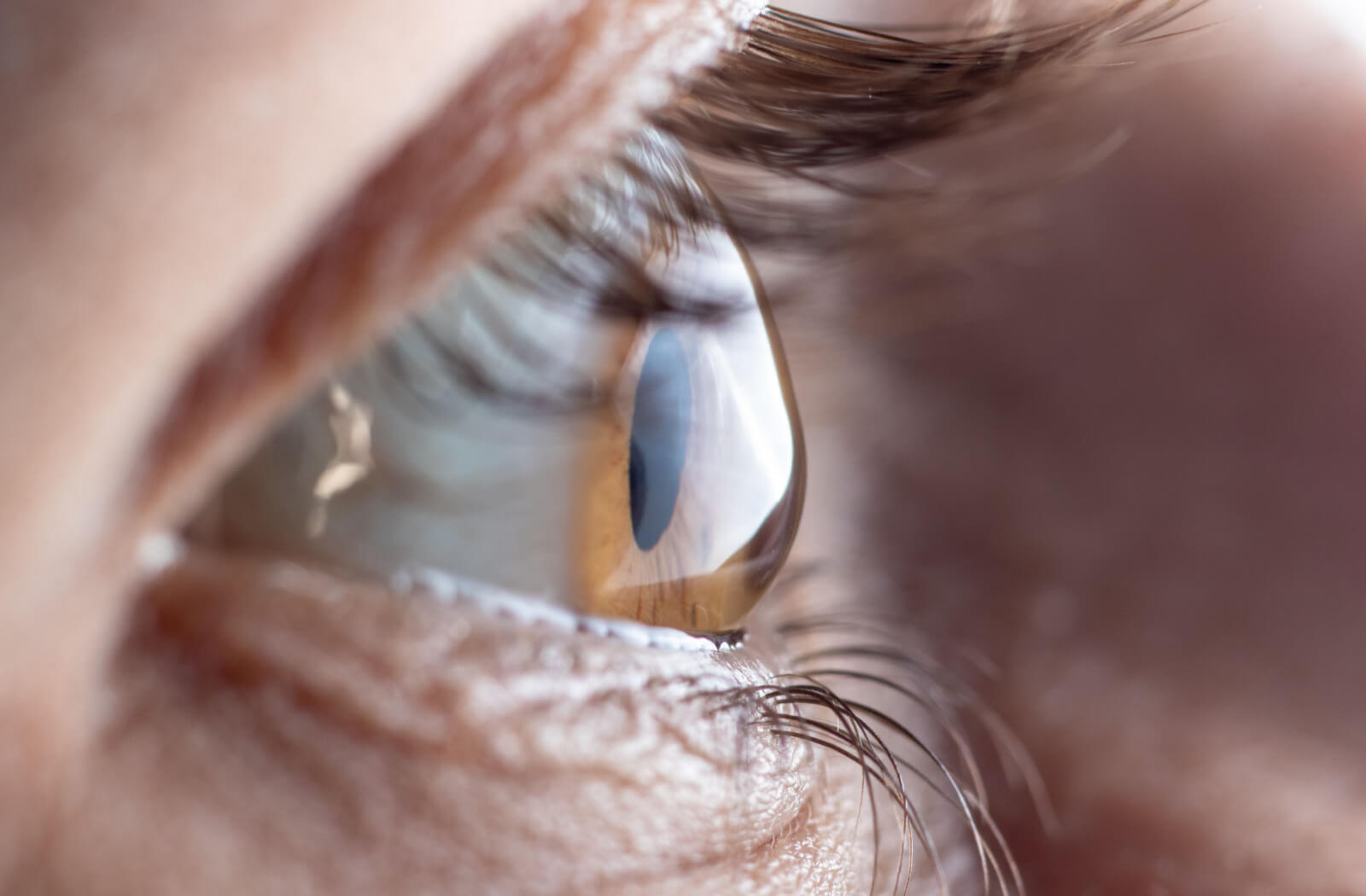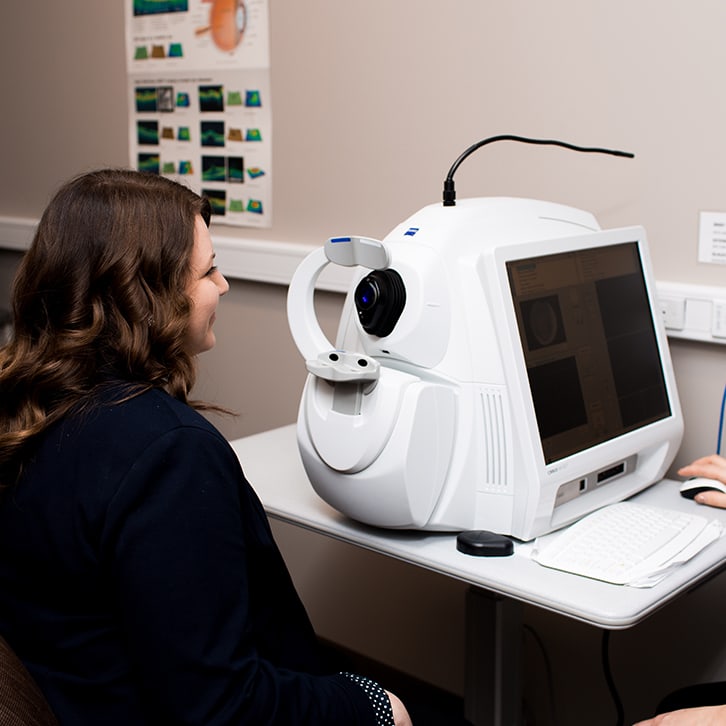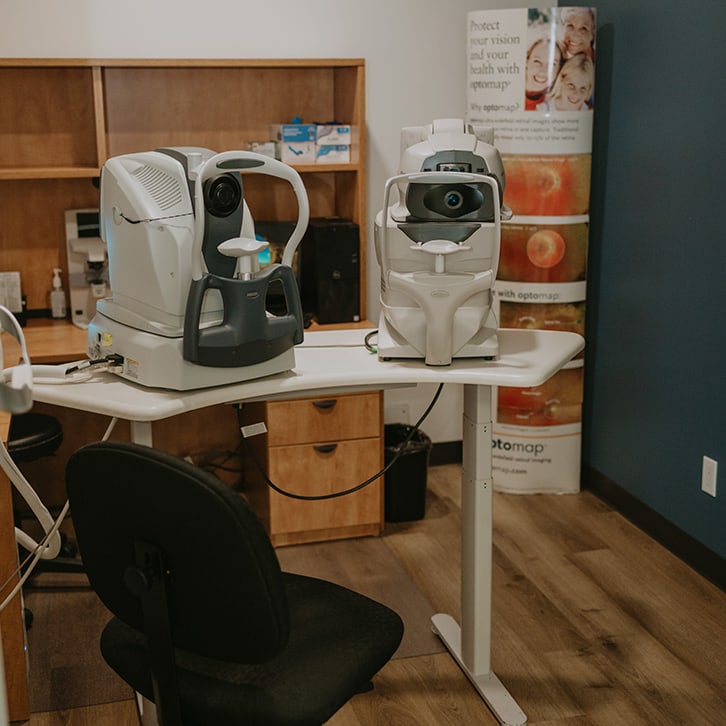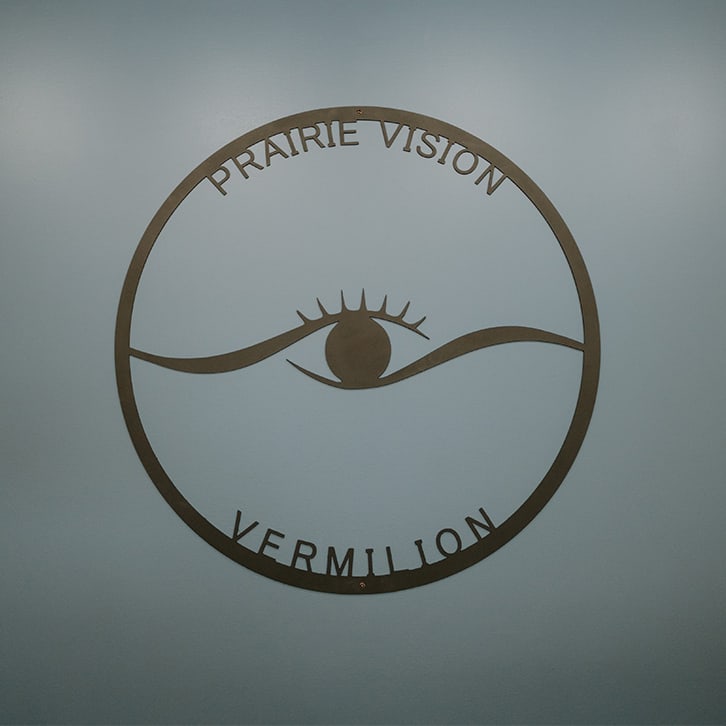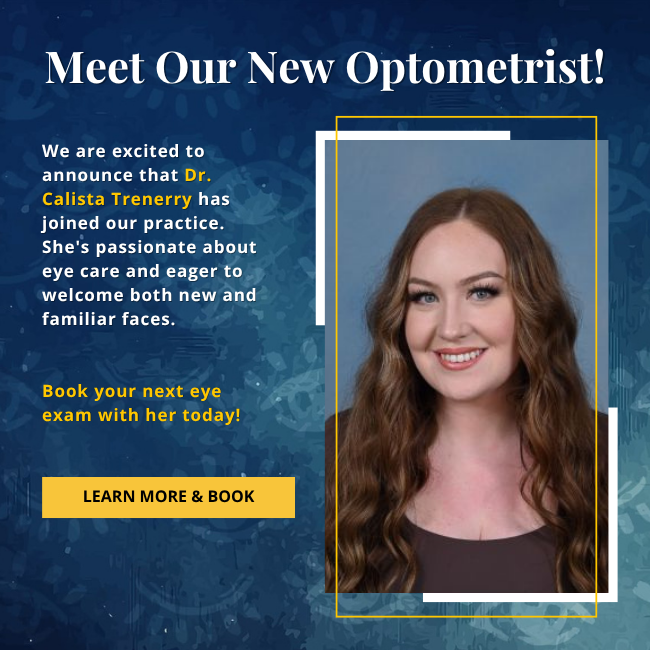Astigmatism is a refractive error that affects the eye’s ability to focus light. Astigmatism causes blurry vision due to an irregularly shaped cornea or lens in the eye.
While many people live with astigmatism without experiencing a significant change in their condition, some may notice a worsening of symptoms if left untreated, with age, and if accompanied by other eye conditions.
Your eye doctor can diagnose astigmatism with an eye exam and determine whether you need corrective lenses to help you see clearly.
What Is Astigmatism?
Astigmatism is an eye condition or refractive error resulting from an irregularly shaped cornea (the clear front part of the eye) or lens (located behind the iris that helps the eye focus). In a healthy eye, the cornea and lens are round, allowing light to pass through and focus on the retina (the light-sensitive tissue at the back of the eye) to form clear images.
However, in astigmatism, the cornea or lens is oval or irregular, causing light to scatter and not focus on the retina, resulting in blurry vision at all distances. You can have astigmatism with other refractive errors, such as myopia (nearsightedness) and hyperopia (farsightedness). Some people are born with astigmatism, but children and young adults can also develop astigmatism.
Symptoms of Astigmatism
You may not have noticeable symptoms with mild astigmatism, which makes eye exams important for detecting this refractive error early, especially in children who may not realize they have a vision problem. Common symptoms of astigmatism can include:
- Blurry or distorted vision
- Squinting to see clearly
- Headaches
- Eye strain
- Trouble seeing at night
Causes of Worsening Astigmatism
Astigmatism can worsen over time. Progressing astigmatism can have several causes.
Genetic Predisposition
Anyone can get a refractive error. But, one of the primary factors influencing the progression of astigmatism is genetic predisposition. Individuals with family members wearing glasses or contact lenses or a history of astigmatism are more likely to develop the condition. Genetic factors play a crucial role in determining cornea and lens shape and structure, contributing to the development and exacerbation of astigmatism over time.
Age-Related Changes
As we age, various physiological changes occur in the eye that can impact the progression of astigmatism. The lens, responsible for focusing light onto the retina, gradually loses its flexibility and elasticity with age. This natural aging process can lead to astigmatism worsening over time. Additionally, alterations in the corneal shape due to aging can contribute to the progression of astigmatism in some individuals.
Unmanaged Refractive Errors
Failure to address and correct astigmatism can contribute to its progression. Uncorrected refractive errors can further strain the eye, leading to changes in corneal shape over time. Specialty contacts for patients with astigmatism can gently reshape the cornea and provide clear vision.
Laser eye surgery can correct astigmatism by reshaping the cornea to alter how light enters the eye. However, not everyone is a candidate for laser eye surgery. Speak to your eye doctor to find out if you’re a candidate.
Keratoconus
While not directly causing astigmatism, keratoconus can cause worsening of astigmatism. Keratoconus is a corneal disorder that gradually thins and bulges outward, resulting in distorted vision.
Keratoconus can coexist with astigmatism and contribute to its progression, leading to irregular astigmatism or astigmatism that you can not correct with glasses. Managing keratoconus through appropriate interventions, such as specialized contact lenses or surgical procedures, is essential to prevent the worsening of astigmatism.
Chronic eye rubbing is a habit that can cause keratoconus and exacerbate astigmatism. Vigorous eye rubbing, especially over an extended period, can contribute to irregularities in the corneal curvature or changing the corneal shape from cylindrical to cone-shaped, resulting in reduced visual acuity.
Other Causes of Worsening Astigmatism
Trauma or injuries to the eye can cause a change in the shape of the cornea or lens, resulting in or worsening astigmatism. Certain eye surgeries, such as cataract surgery or corneal transplant, can cause astigmatism to worsen. Wearing glasses with an incorrect astigmatism prescription can also worsen symptoms such as blurry vision, eye strain, and headaches.

Early Diagnosis & Treatment for Astigmatism
You may not need prescription eyeglasses for mild astigmatism. However, if you experience eye strain or headaches, speak to your eye doctor about vision correction. The following treatments can correct almost all levels of regular astigmatism:
- Properly fitted prescription eyeglasses
- Contact lenses
- Laser and other refractive surgery
- Orthokeratology or corneal refractive therapy
Astigmatism is a common eye condition that affects many people and can worsen due to age-related changes, having other eye conditions, and if left untreated.
Regular eye examinations, early diagnosis and correction of refractive errors, and healthy eye care habits play pivotal roles in maintaining eye health. If you experience any symptoms of astigmatism, book an appointment with Prairie Vision for an eye examination and treatment to prevent your astigmatism from worsening.

